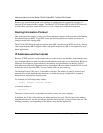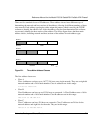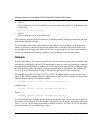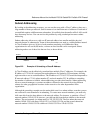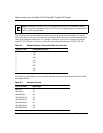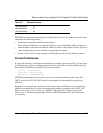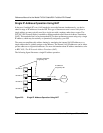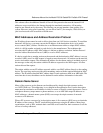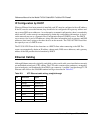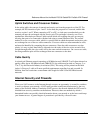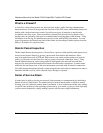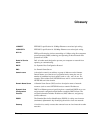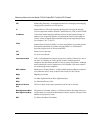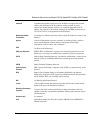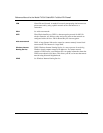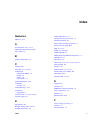
Reference Manual for the Model FVS318 Cable/DSL ProSafe VPN Firewall
B-10 Networks, Routing, and Firewall Basics
IP Configuration by DHCP
When an IP-based local area network is installed, each PC must be configured with an IP address.
If the PCs need to access the Internet, they should also be configured with a gateway address and
one or more DNS server addresses. As an alternative to manual configuration, there is a method by
which each PC on the network can automatically obtain this configuration information. A device
on the network may act as a Dynamic Host Configuration Protocol (DHCP) server. The DHCP
server stores a list or pool of IP addresses, along with other information (such as gateway and DNS
addresses) that it may assign to the other devices on the network. The FVS318 VPN Firewall has
the capacity to act as a DHCP server.
The FVS318 VPN Firewall also functions as a DHCP client when connecting to the ISP. The
router can automatically obtain an IP address, subnet mask, DNS server addresses, and a gateway
address if the ISP provides this information by DHCP.
Ethernet Cabling
Although Ethernet networks originally used thick or thin coaxial cable, most installations currently
use unshielded twisted pair (UTP) cabling. The UTP cable contains eight conductors, arranged in
four twisted pairs, and terminated with an RJ45 type connector. A normal "straight-through" UTP
Ethernet cable follows the EIA568B standard wiring as described in Table B-3.
Table B-3. UTP Ethernet cable wiring, straight-through
Pin Wire color Signal
1 Orange/White Transmit (Tx) +
2 Orange Transmit (Tx) -
3 Green/White Receive (Rx) +
4Blue
5 Blue/White
6 Green Receive (Rx) -
7 Brown/White
8Brown



